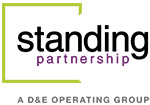Optimize B2B Content for the Tech Buyer’s Journey
Tech purchasing is a complex choice for buyers. Optimizing B2B content for each stage of their journey is key to success for your company.
Today’s B2B tech buyers are more educated, more deliberate and more distracted than ever. They often feel overwhelmed by choices and flooded with information. And that’s why understanding the buyer’s journey is essential for sales success.
But here’s the thing: tech buyers rarely make decisions based on a single touchpoint. Instead, they navigate through stages—each requiring distinct types of content, attention and engagement.
And the path to purchase isn’t always linear, with purchasers looping through stages and engaging multiple stakeholders in every buying decision.
The key to winning the sale? Knowing exactly where your buyer is in that journey and meeting them with the right sales enablement content at the right moment.
The Tech Buyer’s Journey: A Roadmap
The buyer’s journey isn’t about the transaction. It’s about solving a problem. For tech buyers, this journey typically spans four distinct stages: Awareness, Interest, Consideration and Decision.
Each phase requires tailored content to move the buyer closer to purchase.
Stage 1: Awareness
The tech buyer’s journey begins with Awareness. Buyers at this stage aren’t yet thinking about solutions. They’re focused on learning and understanding their problems. And sometimes, they may not have identified that they have a problem to solve at all.
At this stage, the content you create should be all about education. Focus on the pain points your target audience is likely experiencing. For example, your prospects may need to simplify processes, unite systems or consolidate data. But don’t push your solution just yet. Instead, help them understand their challenges with content like:
- Educational blog posts that outline common issues your audience faces and how to solve them with technology
- Social media posts that spark conversation around typical pain points
- Videos that grab attention and explain common problems and trends in an easy-to-consume way
The goal: engage, inform and start building a relationship. Position yourself as a helpful, knowledgeable expert—not a salesperson. That way, you’ll win trust and let your audiences know they can rely on you for quality information.
Stage 2: Interest
In the next stage—Interest—your audiences are aware of your brand and already engaged with your content. They may have read your blogs posts, watched a video or offered up their contact information in exchange for a piece of gated content. While they may be in the market for what you sell eventually, they’re likely conducting research on technologies their organizations may need in the future.
Meet your audience where they are with content that helps them gather information relevant to their needs and keep you in their consideration set. Build the connection with content such as:
- eBooks and white papers that cover key topics in-depth
- Infographics that illustrate data trends
- Webinars or video content that dive into industry-wide issues
- Email nurture series that stays in touch and delivers informative content
Your objective during the Interest stage is to give prospects information that sparks curiosity about your offerings and motivates them to learn more. If you’re successful, they’ll put you on their shortlist when the time comes to buy.
Stage 3: Consideration
Once a buyer knows which problem to solve—such as making sense of data or managing tech stack complexity—they move into the Consideration stage. This is when they begin actively seeking solutions. They’ll start looking at different options and comparing technologies that might achieve their goals.
Now is your time to shine—but with a slight shift. Instead of focusing primarily on the problem, your content should highlight how to solve it.
But don’t rush to a hard sell. In the Consideration stage, buyers are evaluating their options, and they need detailed, solution-oriented information to help them make an informed choice. Consider content types like:
- Case studies that show real-world success
- Solution guides that explain how your offerings solve their challenges
- Comparison charts that set your product apart from competitors
During this step, you want to forge a positive emotional connection with prospects and clarify why your offerings are the right choice for their needs.
Stage 4: Decision
The final stage in the buyer’s journey is Decision. By now, tech purchasers have narrowed down options to a few providers and are ready to buy. Research has uncovered that the average short list contains just two or three products, and 71% of buyers ultimately go with their top choice.
This is where your content needs to eliminate any lingering doubts that your solution should be ranked #1.
Don’t underestimate the power of testimonials and case studies in this stage. Seeing how other companies have successfully implemented your B2B tech solution—and hearing about the real-world outcomes—will give buyers the confidence they need to move forward.
In addition to testimonials and case studies, other types of content include:
- Pricing pages with clear, transparent information
- Free trials or software demos that let buyers experience your solution firsthand
- ROI calculators to show the financial impact of your technology
- Customer success stories that demonstrate tangible ways your tech solution saves time or money
Engage and Convert Audiences with the Right Content
Mapping the B2B tech buyer’s journey and optimizing content for each stage isn’t just a good idea. It’s a strategic way to build your pipeline and close more deals. When you understand your customers’ needs and meet them with relevant, helpful content each step of the way, you’ll build a relationship that lasts beyond the sale.
By using content to cultivate relationships with prospects, you are also demonstrating that you value their experience. The result? More engaged buyers, higher conversion rates and long-term customer loyalty.
Need clarity on how to align your content strategy to your buyer’s journey? We’re here to help. Let’s chat.

